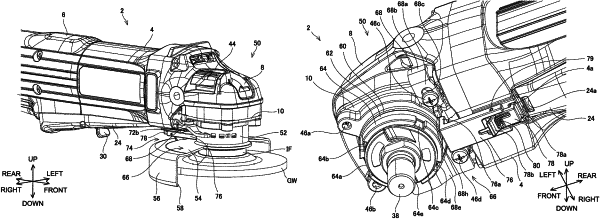| CPC B24B 23/028 (2013.01) | 19 Claims |

|
1. An electric power tool, comprising:
a motor;
a power transmission mechanism connected to the motor;
a housing that houses the motor and the power transmission mechanism;
a tip tool holder connected to the power transmission mechanism;
a cover covering at least a part of the tip tool holder;
a first locking mechanism comprising a first member configured to switch between a first locking state and a first unlocked state, wherein the first member switches from the first locking state to the first unlocked state in response to a first unlocking operation by a user; and
a second locking mechanism comprising a second member configured to switch between a second locking state and a second unlocked state, wherein the second member switches from the second locking state to the second unlocked state in response to a second unlocking operation by the user,
wherein
the cover becomes detachable from the housing when the user performs the second unlocking operation on the second member and the first unlocking operation on the first member,
the first member is configured to prohibit the cover from being detached from the housing in the first locking state and to allow the cover to be detached from the housing in the first unlocked state,
the second member is configured to prohibit the first member from switching from the first locking state to the first unlocked state in the second locking state and to allow the first member to switch from the first locking state to the first unlocked state in the second unlocked state,
the first member includes a movable member supported by the housing so as to be movable,
when the first member is in the first locking state, the movable member is at a first locking position at which the movable member engages with the cover,
when the first member is in the first unlocked state, the movable member is at a first unlocked position at which the movable member does not engage with the cover,
in response to the first unlocking operation by the user, the movable member moves from the first locking position to the first unlocked position, and
the second member is configured to prohibit the movable member from moving from the first locking position to the first unlocked position in the second locking state and to allow the movable member to move from the first locking position to the first unlocked position in the second unlocked state.
|